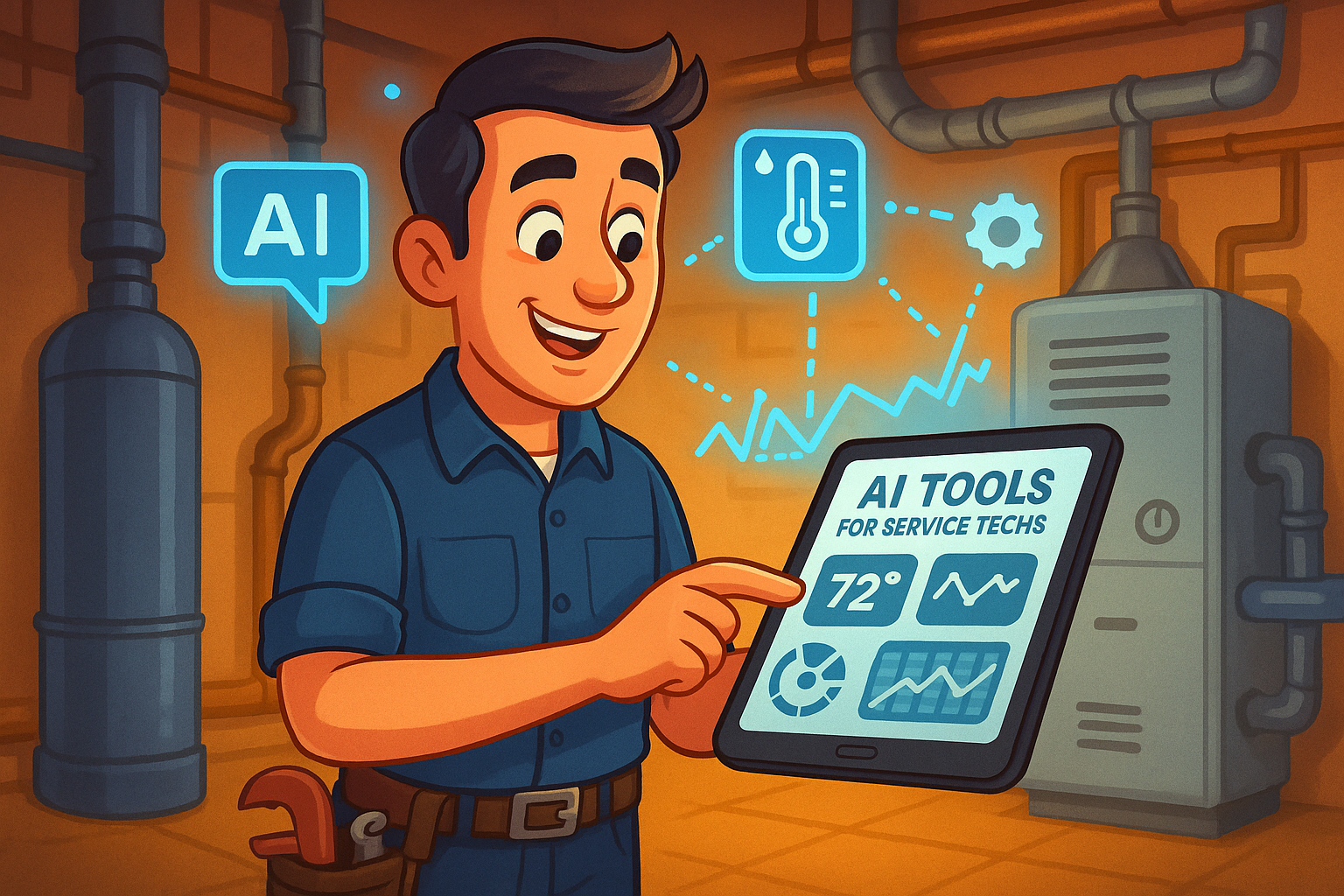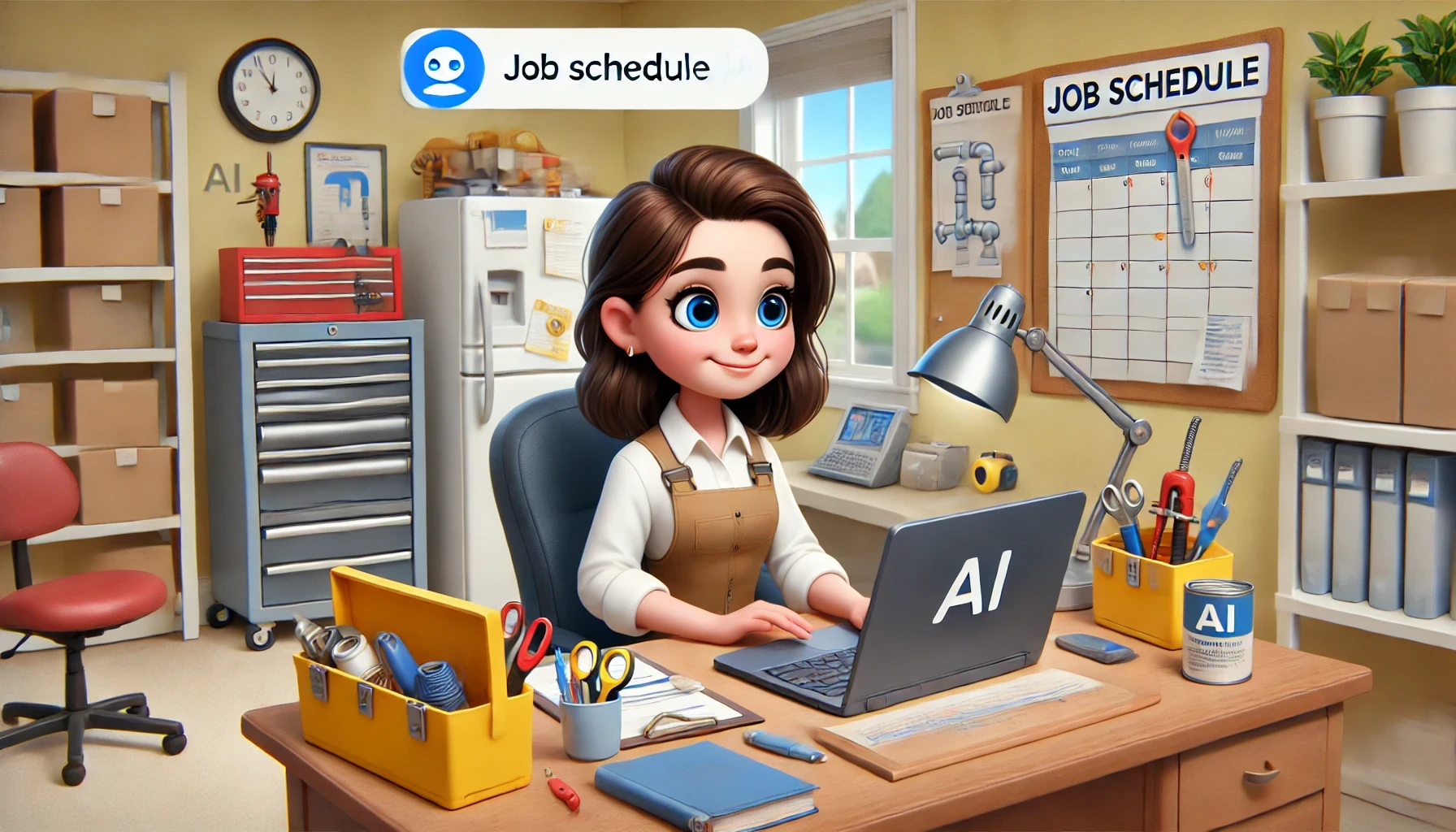Practical ways AI can make your life easier, one service call at a time.

Introduction
If you’re a service tech—HVAC, electrical, plumbing, or any other trade—you’ve probably heard about AI by now. Some think it’s just hype for big corporations. Others imagine robots replacing techs in the field.
Here’s the real deal: AI won’t replace techs. But it absolutely can help you do your job faster, smarter, and with fewer headaches.
And you don’t need to be a tech whiz to start using it.
This post is your quick guide to real AI tools service techs can use right now—no coding, no complicated setups. Just practical stuff you can plug into your day-to-day work.
1. ChatGPT: Your Pocket Troubleshooter and Writing Assistant
Let’s start with the easiest tool most people can try for free: ChatGPT.
Think of it like having a helpful coworker in your pocket. You can ask it:
- Troubleshooting tips “I’m working on a Carrier gas furnace with error code 33. What should I check first?”
- Part identification help “Explain what a TXV does in an AC system in simple terms.”
- Writing assistance “Write a short email explaining to a customer why their blower motor needs replacing.”
It’s great for:
✅ Finding answers quickly
✅ Writing texts, emails, or reports
✅ Breaking down complex info into plain language
2. Google Lens: Identify Parts on the Fly
Ever find yourself staring at a part with no label—or a weird fitting you’ve never seen?
Google Lens (a free app on Android or iOS) lets you:
- Take a photo of a part
- Search visually for matching images
- Find suppliers, specs, or installation info
Super handy for:
✅ Mystery parts
✅ Obsolete labels
✅ Odd tools or fittings
3. AI-Based Translation Apps: Talk to More Customers
Working in diverse neighborhoods? Sometimes language barriers can slow things down. AI translation tools like Google Translate or Microsoft Translator can:
- Translate conversations in real time
- Help explain repairs or costs
- Make customers feel more comfortable
Use them to:
✅ Explain jobs clearly
✅ Translate invoices or notes
✅ Answer simple questions on the spot
4. AI Note-Taking & Voice-to-Text Tools
Let’s be real—most techs hate paperwork. Tools like Otter.ai or even your phone’s built-in voice-to-text can:
- Transcribe your spoken notes
- Create service logs automatically
- Help you remember details from complex jobs
Instead of scribbling on a notepad, just say:
“Changed capacitor, pressures normal, advised customer to replace filter.”
And it’s instantly saved for your report.
5. Route Optimization and Smart Scheduling
If you’re running your own truck—or managing a small team—AI can save you a ton of drive time.
Apps like:
- Housecall Pro
- Jobber
- ServiceTitan
…use AI to:
✅ Plan efficient routes
✅ Avoid traffic delays
✅ Group nearby jobs to save fuel and time
6. Image Recognition for Diagnostics
Some AI tools can analyze photos or video from equipment to:
- Detect refrigerant leaks
- Identify corrosion or wear
- Highlight anomalies in thermal images
While these tools are still evolving, some manufacturers already include AI analysis in their apps for certain products.
For example: Some thermal cameras now highlight hot spots automatically, saving time when diagnosing electrical issues or HVAC heat loss.
7. AI-Generated Training Materials
Need to train new techs—or keep up with new codes and equipment?
ChatGPT or similar tools can help you:
- Write quick how-to guides
- Summarize long manuals
- Create checklists for specific equipment
Example:
“Write a step-by-step guide for changing a blower motor on a Goodman air handler.”
Why AI Won’t Replace Techs—But Will Help Them
Here’s the big takeaway:
✅ AI tools help you save time.
✅ They help you look more professional.
✅ They help you troubleshoot faster.
But they’re not climbing a ladder or crawling through an attic. That’s still your job.
The techs who learn how to work with AI will be the ones who stand out.
Conclusion
AI doesn’t replace skill—it amplifies it. Whether you’re solo or working for a company, these tools can help make your workday smoother and give you a leg up in the field.
📩 Want more tips like this? Sign up for my newsletter for practical AI tools and real-world examples from the trades.
💬 Have a tool you’re already using? Drop a comment—I’d love to hear what’s working for you.



